Wow, imagine that, two blogs within a day of each other. I did promise though, so here goes:
Moving on from the chameleons of the previous post, to the other genera. As I mentioned, neither of these genera was found near camp, partly because we didn’t know how to look, and partly because apparently the first isn’t found there.
Calumma
I’m going to apologise in advance for the lack of accuracy of the latin names in part, because there is some discussion and uncertainty on my part and that of the authorities on the matter. Most of you won’t care, but I do. Anyways, we were fortunate enough to see three representatives of the genus Calumma in Montagne d’Ambre (on which there will most likely be a later post). These included C. amber – Amber Mountain Elephant Ear Chameleon, C. oshaughnessyi ambreensis – what I call the Amber Mountain Giant Chameleon, because it is very close in appearance to C. parsonii, and C. “blue nose” – we were told it is C. nasutum, but that is clearly not the case, so the alias blue nose will have to do. You’ll see why. Anyways, to the pictures!
Calumma amber
Male:
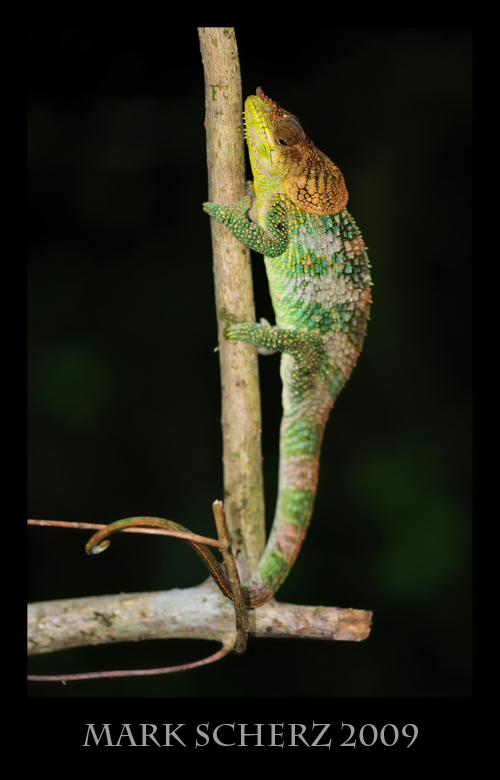
D300 + 105mm VR + R1 flash unit @ 1/60s f/3.2
Female:
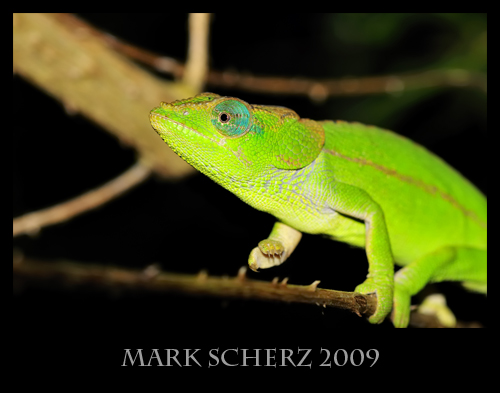
D300 + 105mm VR + R1 flash unit @ 1/60s f/8
Calumma oshaughnessyi ambreensis
Male:
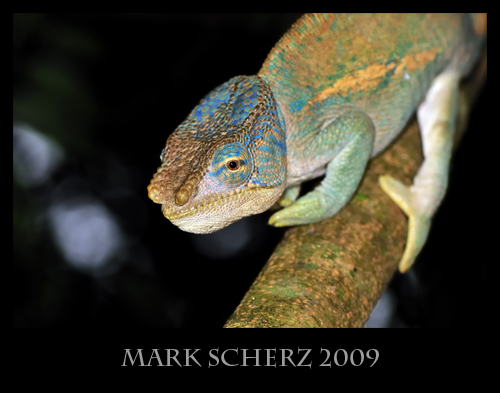
D300 + 105mm VR + R1 flash unit @ 1/60s f/8
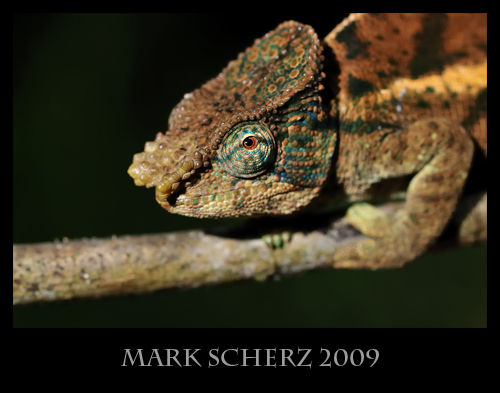
D300 + 105mm VR @ 1/400s f/5.6
Female:

D300 + 105mm VR + R1 flash unit @ 1/60s f/8
Calumma “blue nose”
Male:

D300 + 105mm VR + R1 flash unit @ 1/60s f/8
The “blue nose” complex consists of about six species of the smallest of the large chameleons in Madagascar. This individual was the length of my index finger.
But that’s enough of these giants! Let’s move on to the really interesting, really exciting stuff, shall we? Well, I hate to disappoint in that I only have two pictures for you (either of which you can order prints of if you’d like – more on that later this week), but I hope they give you an idea of what it means to be little.
Brookesia
The dwarf chameleons, in Madagascar represented by the genus Brookesia, are tiny lizards, but their bodies function in the same way as the large ones – they too have elastic tongues that snatch (much much smaller) flies from twigs. Montagne d’Ambre is home to three species, B. tuberculata – Amber Mountain Dwarf Chameleon, B. stumpffi – Short Legged Dwarf Chameleon, and B. minima – Pygmy Dwarf Chameleon, the smallest chameleon in the world. We did not get to see B. stumpffi, but I was ridiculously pleased with seeing both of the other species, right next to where we were staying. HOWEVER, I only have pictures of B. tuberculata to show you (and so you know, B. minima is just as small, but weighs slightly less).
Here ya go:
Brookesia tuberculata
Adult, unsexed:
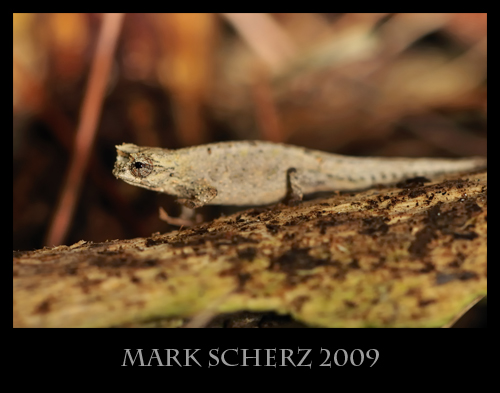
D300 + 105mm VR + R1 flash unit @ 1/60s f/8
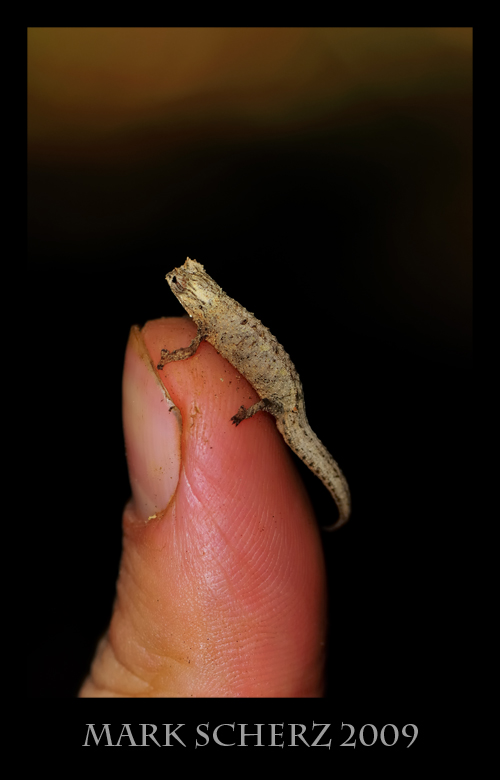
D300 + 105mm VR + R1 flash unit @ 1/60s f/8
As I say, tiny.
Come again later this week to see the next post in the Madagascar series, where we’ll be visiting the world of Chameleon prey, in the land of Bugs.

